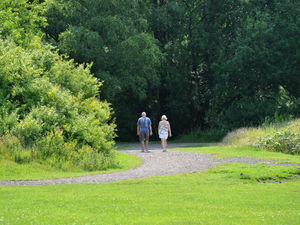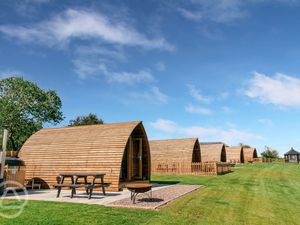Flashback to 1973: RAF team winging in for mountain rescue
If you were stuck in fog up a high mountain with nothing around you but fields and more fog - who would you call?
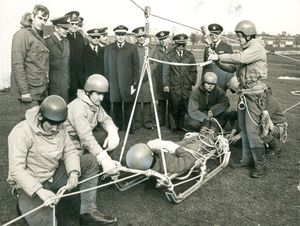
Well, for many decades, if your emergency had happened in Wales, the Pennines or the Peak District you could have relied on Royal Air Force Stafford to come to your rescue.
Although Stafford has no mountains in close proximity, RAF Stafford was the headquarters for the mountain rescue service with a superb team of volunteers.
The mountain rescue service was set up by Flight Lieutenant David Crichton during the Second World War to go to the aid of crashed aircrew who had fallen foul of bad weather, poor visibility and minor navigational errors.
Flt Lt Crichton was the Unit Medical Officer at RAF Harpur in the Peak District and responded to crashes with medical orderlies and an ambulance.
More people began to notice his work and consequently more volunteered. Training began as most volunteers had little or no mountain experience and it is recorded that a team first departed RAF Stafford on June 9, 1961, for a week's training at Edale in the Peak District.
Since 1961, when the RAF Stafford Mountain Rescue Team was formed, following the closure of the team at RAF Harpur Hill, it has responded to hundreds of call-outs to assist police and neighbouring civilian mountain rescue teams.
And in August 1973 one of their successful rescues was reported in the Express & Star after a 10-man team jumped into action while on a training exercise.
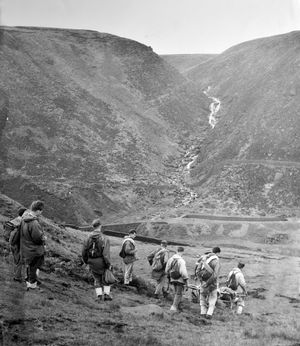
They helped bring down an injured climber from the Gullin mountains on the Isle of Skye.
The man from Croydon in south London had fallen while attempting a difficult climb.
He was taken to hospital but was not believed to have been seriously injured.
In another search, the rescue team decided the climber they had been sent to look for probably didn't exist.
Argyllshire Police raised the alarm when other climbers reported having heard a woman shouting for help.
Rescue dogs and a helicopter were used in the search but eventually a police spokesman said they had decided to call off the hunt because the teams had been unable to find anyone.
"We have been around all of the hotels and accounted for every person and all cars," they added.
A rescue team from RAF Stafford also assisted in the search for victims and in the marking of wreckage following the Lockerbie air disaster.
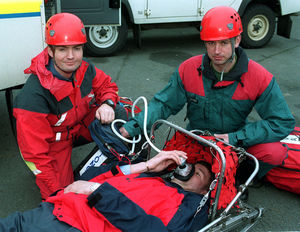
A terrorist bomb destroyed the airliner on 21 December, 1988, killing all 259 passengers and crew on board.
Another 11 people died when the wreckage fell onto the Scottish town which gave the atrocity its name.
And a few weeks later his team entered the wrecked fuselage of the British Midland Boeing 737 on the M1 at Kegworth.
The plane had crashed while attempting to make an emergency landing at East Midlands Airport. A total of 47 people were killed and a further 74 injured in the disaster.
Sergeant Pete Winn who was the leader of the mountain rescue team at the time went on to receive a special award.
He was called in to help at the scene of the Lockerbie tragedy just three weeks after taking up the post.
Sgt Winn has been awarded a top RAF honour _ the Commendation of the Air Officer Commanding-in-Chief Strike Command.
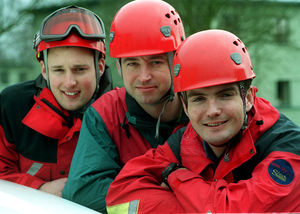
By the 2000s, service headquarters in Stafford co-ordinated the RAF's five mountain rescue teams (MRTs) which are based in Kinloss, Leuchars, Leeming, St Athan as well as Stafford.
Each separate team consisted of seven full-time personnel and up to 30 volunteers. RAF Staffordπs MRT had 21 volunteers ranging from 18 years to mid 40s, although in the past volunteers have been much older.
Volunteers had to be in the RAF and would all have a first trade within the air force.
The unpaid volunteers were on call 24 hours hours a day, 365 days a year. Their basic job was to be ready for a call out within one hour no matter where they are.
Some members of the team were qualified up to paramedic level and could administer first aid at the scene and guard the area until crash investigators and assistance arrives.
On 17 December 2004 the Mountain Rescue Team relocated to RAF Valley after 42 years with RAF Stafford.


